#ryūkyū islands
Explore tagged Tumblr posts
Photo
Camellia sasanqua, with common name sasanqua camellia,[1] is a species of Camellia native to southern Japan (Kyushu, Ryukyu Islands and Shikoku).[1] It is usually found growing up to an altitude of 900 m (3,000 ft).
Growing to 5 m (16 ft) tall, this evergreen shrub has leaves that are broad elliptic, 3–7 cm long and 1.2–3 cm broad, with finely serrated margins. The flowers are 5–7 cm in diameter, with 5–8 white to dark pink petals.






chamei/camellia sasanqua in winter by 动脉影
883 notes
·
View notes
Text

Les artilleurs de marine pilonnent les positions japonaises avec un obusier M1 de 155 mm – Bataille d'Iwo Jima – Campagne des archipels Ogasawara et Ryūkyū – Guerre du Pacifique – 1945
#WWII#ww2#guerre du pacifique#pacific war#campagne des archipels ogasawara et ryūkyū#volcano and ryukyu islands campaign#bataille d'iwo jima#battle of iwo jima#artillerie#artillery#obusier#howitzer#m1 155 mm#155 mm howitzer m1#iwo jima#japon#japan#1945
14 notes
·
View notes
Text
Indigenous History Month ask game !
What is your Indigenous identity/identities?
Are you connected, semiconnected reconnecting or disconnected to your culture?
What is your favorite indigenous character? (Canon, headcanon and OC's are okay!)
What does your indigeneity mean to you?
Where are your traditional lands?
What's something that you'd like to see for indigenous representation in media and why?
Can you speak your traditional indigenous language(s)? If so, can you say something in it?
Can you share some traditional knowledge if possible?
If you're connected, semiconnected or reconnecting, can you share a favorite traditional story of your people?
What's an unpopular opinion you have?
What's an intracommunity discussion you'd want to see be talked about more?
Do you have any pet peeves surrounding your community?
How does your indigeneity effect your queerness?
How does your indigeneity affect your plurality, if you are plural and if applicable?
What are your peoples' architecture like?
If you could share one thing with your ancestors, what would it be?
Indigenous vampires or Indigenous werewolves?
What's something you'd want nonindigenous peoples to understand?
What is your faith, if applicable?
Do you practice your traditional indigenous religion?
If you don't practice your indigenous religion, what do you practice, if applicable?
What's something that you feel the loss of with colonization?
Do you own traditional attire?
What is your favorite cultural clothing?
Do you have plant & ecological knowledge?
What's something that makes you proud of your indigeneity?
How has decolonization impacted you?
How do you show up for your community?
Who's your favorite indigenous celebrity, if applicable?
What's something you'd want to say to your future descendants, biological or otherwise?
Note: this is by Indigenous people for Indigenous peoples ONLY! While this was mostly made for Indigenous peoples of Turtle Island, it's by no means exclusive to these groups, it's not specific to one culture, but nor is it open for all POC to use. This inherently includes First Nations, Métis, Inuit, Indigenous Americans, Alaska Natives, Greenlandic Inuit / Kalaalit Nunaat, Indigenous Mexicans, Indigenous Central Americans, Indigenous peoples of Abya Ayala (South America), Afroindigenous people in the diaspora (ie Black ndns, Black Americans, Black Canadians, Black South Americans, Black Carribeans, Black Mexicans, etc), Indigenous Africans (Maasai, Somalis, Tigrayans, Xhosa, Zulu, etc), African Diasporic Asians (ie the Siddi in India), Pasifika (Native Hawaiians / Kanaka Maoli, Polynesians, Melanesians, Micronesians, etc.), Aboriginal Australians & Torres Straits Islanders, Māori, Papuans, Black Austronesian peoples, colonized people in China (ie Tibetans, Uighurs, etc), the Ainu of Ainumoshir & Ryūkyūans/Okinawans of Ryūkyū in Japan, colonized people in India, Central Asia & Southeast Asia, Indigenous Taiwanese, peoples of West Asia (Indigenous Palestinians, Jewish people predominantly in the diasporas, Armenians, Kurds, etc.), Indigenous Europeans (Sámi, Karelians, Basque, Crimean Tatars, Irish Travellers, etc.), Indigenous Siberians, Romani & mixed race indigenous peoples! Do not use these for yourselves if you're not Indigenous in any way and especially not if you're white. Zionists, Kahanists, blood quantum purists & enrollment enforcers & assimilated Indigenous peoples who have no intention of connecting to their cultures whatsoever & do not fight for indigenous sovereignty DNI with this post. Please no discourse in the notes or with each other, I want us all to be kind to each other and to have fun with each other, ty!! 💕
#mine.#** blog; memes.#this is smth ive been meaning to try for a lil while so SDFFGHLLLITDDFGJJGGHKJH#idk have fun !!!!!! & be kind to each other !!!!!!!!
8 notes
·
View notes
Photo

Evening Moon at Izumizaki (Izaumizaki yagetsu), from the series Eight Views of the Ryūkyū Islands (Ryūkyū hakkei). ca. 1832. Credit line: Henry L. Phillips Collection, Bequest of Henry L. Phillips, 1939 https://www.metmuseum.org/art/collection/search/49934
#aesthetic#art#abstract art#art museum#art history#The Metropolitan Museum of Art#museum#museum photography#museum aesthetic#dark academia
5 notes
·
View notes
Text
What struck me almost immediately about this anecdote was: Captain Basil Hall must have been utterly ignorant about the "peculiar" situation of the Loo Choo people, who were in fact the inhabitants of the Kingdom of Ryūkyū, better known nowadays as Okinawa. Since the islands that make up Ryūkyū are in the Northern hemisphere, they are not in the South Pacific (that would have approached Melanesia and Australia), but the North Pacific, more specifically the China Sea.

A little history on Okinawa/the Ryūkyū Islands: it was an independent kingdom that was both a vassal state to China (from the Ming Dynasty onwards, specifically 1429) and Japan (through the invasion of the Shimazu clan from the Satsuma Domain, from 1609 onwards). Long story short, it remained (semi-)automous until was annexed by the Japanese Empire during the Meiji Era in 1879.
Due to the kingdom's proximity to Confucian civilisations, the government and inhabitants of Ryūkyū naturally adopted Confucian principles. Captain Hall, who visited the capital of Ryūkyū in 1816 by the ship Lyra, seemed to view this island kingdom as some kind of pacifist haven. After doing some light digging, Hall and John M’Leod, physician on board the Lyra's fellow expedition ship the Alceste, both wrote accounts that promoted this view. As Gregory Smits describes in the The Asia-Pacific Journal article "Examining the Myth of Ryukyuan Pacifism", an article that also provided the image above:
These accounts gushed with praise over the kindness, gentleness, and intelligence of the Okinawans, whose behavior compared especially well with the alleged boorishness and arrogance of “the Chinese.” According to Hall and M’Leod, Okinawa was a land of peace and serenity. Its residents bore no weapons and its people committed no crimes. According to Hall: “We never saw any punishment inflicted at Loochoo; a tap with a fan, or an angry look, was the severest chastisement ever resorted to, as far as we could discover.”
Hall is unlikely to have fabricated his his account—M'Leod's testimony matched his. However, their accounts of "Loo Choo" was limited to what they saw, as the Ryūkyū government applied their experience in keeping a careful balance of power between their Chinese and Japanese neighbours to the Europeans. Also from the article:
One general point to bear in mind regarding the image of Ryukyu as a pacifist kingdom is that by the nineteenth century Ryukyuan officials had become extremely adept at manipulating the kingdom’s image vis-à-vis outsiders. The most important group of outsiders was Chinese investiture envoys (sakuhōshi). Let us consider the case of vice-envoy Li Dingyuan in 1800. In Shi Ryūkyū ki, Li’s detailed record of his stay in Ryukyu, he described with much enthusiasm the plot of the kumiodori play Kōkō no maki (Tale of filial piety) and concluded with an exclamation that heaven greatly rewards those who give their lives for filial piety. [...] The play was first shown to Chinese envoys in 1756. In Li’s case, just before his departure, royal envoys unexpectedly showed up with fans, incense, and other gifts. It was the birthday of his mother in China, but Li had not told anyone in Ryukyu about it. Ryukyuan officials had done their research well, and Li was most impressed by this display of filial consciousness on their part. My point in mentioning Li’s experience in Ryukyu is simply to emphasize the skill with which Ryukyuan officials worked to portray positive images to foreign visitors. In classic Confucian values, a state governed by virtue would have little or no need for coercive force. Ryukyuans presented this same general image to European visitors as well as Chinese.
As for the Ryūkyū peoples' state of military affairs, Hall seems to imply an eternal state of pacifism with his use of present tense in describing the "Loo Choo". This smacks of him trying to emphasise a sort of moral high ground to the "warmonger" Napoleon. However, it would be a complete lie to say the kingdom of Ryūkyū had neither blades nor firearms before, during, or after Napoleon's time. The article goes into great detail about the military affairs that existed before the Kingdom became a Japanese vassal state, especially the state of the artillery in the 15th century, and the Kingdom did not just appear out of thin air—it was unified through conflict and strife. Have a read if interested—it serves as a good introductory summary.
In the end, I don't think Napoleon brought Hall's tales entirely—he too came from an island state, tossed between two larger states, that had once seceded from its rulers with dreams of remaining an independent republic. Surely, if he had known the historical context of the Kingdom of Ryūkyū, he would have understood how its people felt having to live between two beasts, and the behaviours that would produce—before he gave up the dream of Corsican independence, that is.
The Emperor is baffled by islanders of the South Pacific
Having settled where Loo Choo was, he went on to enquire about the people, making some amusing comments on their peculiarities. On telling him that they had no arms, he said, "No arms—you mean no cannon, but they have muskets?" I said not only have they no cannon, they have no swords nor spears. "Ni poignards?" asked he. "No," I replied, "We never saw any kind of warlike weapon." "Mais," said Bonaparte in a loud voice and with a manner more vehement and impatient than I had seen before, "Mais sans armes comment se bat-on?"* seemingly provoked that these simple people had no means of breaking that tranquility and peace of which, as far as we know, they are the exclusive possessors. I stated to him that they had no wars, upon which he shook his head, as if the supposition were monstrous and unnatural. When told that the people of Loo Choo had no money, he begged to question the fact. I said we had seen no money and that the people placed no value upon our gold and silver coins. He paused, and looking thoughtful, repeated to himself several times, "They do not know the use of money," and then asked how we contrived to pay for the provisions which they gave us. He was apparently much struck with the liberality of these people, who supplied us with all kinds of stock, and to so great an extent, without taking any payment. He made me describe everything we received from the natives, as well as what we had given them by way of presents.
*without arms, how do they fight?

Notes of an Interview with Bonaparte at St Helena on the 13th August 1817, written by Captain Basil Hall, Royal Navy.
#basil hall#the amherst embassy to china#where... they refused to meet the emperor because they didn't want to kowtow#and then went to korea and okinawa before going to st. helena#where napoleon hears about china and gives posterity his “sleeping giant” comment#ramble#am i projecting?#napoleon bonaparte#kingdom of ryūkyū#okinawa#ryūkyū islands
34 notes
·
View notes
Text

RED Chef Personal Info:
Full name is Akari Tanaka
Any pronouns, but prefers he/him most of the time
26-28 (older than Scout but younger than Sniper)
Born in Kumamoto prefecture, Japan
Birthday is on June 31
BLU Chef Personal Info:
Full name is Aoki Aojima
Any pronouns, but prefers he/him most of the time
26-28 (older than Scout but younger than Sniper)
Born in the Ryūkyū Islands, Japan
Birthday is on May 24
(None of the chefs are clones, however, Akari and Aoki are half-siblings, fact that neither of them are aware of yet)
About:
Chef is one of the newest and most weird members of Team Fortress.
His roles are quite simple: He cooks, but also provides assistance as a full-time mercenary during matches, making him the tenth class of the team and also a potentially dangerous individual with sociopathic traits. He is obsessed with sushi, the only kind of dish he is able to make due to a generational curse that forbids him from cooking literally anything else.
Not all of chef story is known by his team, but his personal files state that:
Apparently he got brainwashed by the Japanese government as a child and forcefully trained to be a ninja, living most of his life under the service of politicians and high profile people as a living weapon until one day when he accidentally got back his free will, proceeding to murder his superiors so he could flee to America and follow his new dream.
Chef is currently banned from Japan and highly wanted over the crimes of mass murder, mass poisoning, manslaughter, shoplifting, terrorism, throwing bubblegum on the street, accidentally breaking a light pole and more. Same reason why Miss Pauling has asked her to keep a low profile in the meantime.
His dream is to become a famous celebrity chef, have his own cooking show and open his own restaurant, a dream kinda difficult when the only thing you are able to make is sushi and also need to keep constantly a low profile for the crimes you committed in the past.
Load-out:
Main: Suhijiki knifes, which he can use both as a melee weapon or throw at enemies, the only disadvantage is that he can only throw 4 knives per load, but the chances of a critical are high and they make a lot of damage anyways.
Secondary: Smoke Impact bombs made of wasabi, the damage they make is ridiculously low (-3 hp), but the special thing about these bombs is that they liberate a cloud of green smoke that can last around 10-15 seconds and make it very difficult to see anything through them, ideal for dealing with snipers.
Third: Bento Box full of sushi, Its actual role pretty much similar to the sandvich, you can throw or give sushi to your allies so they recover partially their health, the healing obviously isn't as high as a medi-kit or a medigun, but it comes handy to help your Medic not do the work all by himself.
Ability: Besides their loadouts, Chef's unique ability is that he can make up to 3 "super-sonic jumps" with each one taking around 8 seconds to load (think about it like Tracer's teleportation from Overwatch), in other words, he can jump almost immediately to locations near him in a short range due to his training as a ninja.
Fun facts:
Chef's best friend is the Scout, usually with the ones that are on his same team.
The reason why their eyes are an intense color like red or blue unlike the rest of the people is because it's the way on which their generational curse takes form.
Chef can sleep standing up, do not ask her though because she looks creepy as hell when doing it.
His hobbies include calligraphy, meditating, fishing, and obviously cooking.
He is un-familiarized with some western concepts due to the time he spent brainwashed as a ninja, like yogurt, Christmas, modern medicine, etc.
Her thoughts on the gravel wars are pretty much neutral, he doesn't enjoy the idea of having to kill under someone's orders again, but the pay is more than decent so he doesn't complain.
From what is known, Chef's entire family is dead, but after a few DNA test and studies, it was discovered that perhaps... Someone might still remain alive.
3 notes
·
View notes
Text
I'm so happy that Tabikaeru had another event. I was so sure that they were done updating it. ;;
Anyway, for my followers who still play the game...
This was an event in Okinawa!
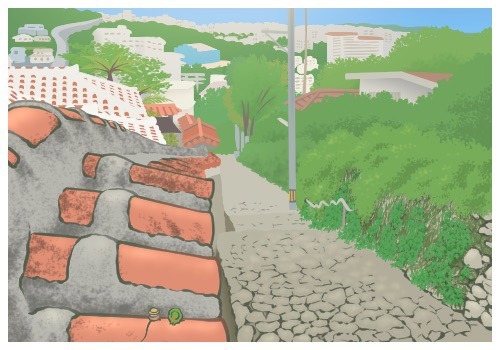
This is a path called Shuri Kinjō-chō in Naha City, Okinawa. It's right near Shuri Castle and is a very old road that was built about 500 years ago, before Japan began its colonization of Okinawa. (And long before it was formally annexed by Japan.)
The path is an interesting part of Ryūkyū history, and it's surrounded by traditional Okinawan houses.
Your frog clearly also visits Starsand Beach on Okinawa's Iriomote Island because he brought back some of the sand as a souvenir! The sand there is full of the exoskeletons of tiny protozoa, and that makes it look like the sand is shaped like stars.
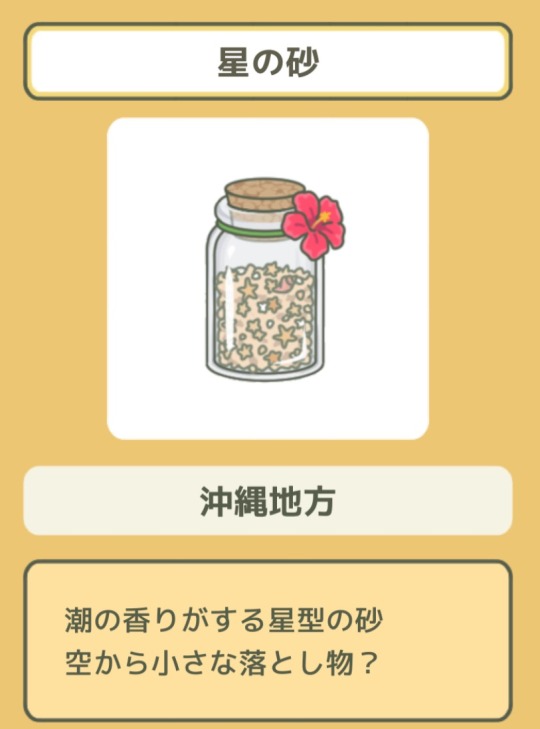
Star Sand Okinawa Region Star-shaped sand that smells of the sea. Did these little stars fall from the sky?


(A still from the game next to a picture of the sand in question.)
#tabikaeru#I kept forgetting to post this#but isn't the picture of Glen and his butterfly pal so cute? ;o;
15 notes
·
View notes
Text
Natural history of rabbits
Do you know your rabbits? Do you know where these come from? (Part 2)
An extinct rabbit closer to us was the Nuralagus Rex. Inhabitant of the Spanish island of Menorca, Nuralagus was one of the biggest rabbit species to roam the earth, having double the weight of modern Flemish Giants. In their paper, Quintana, J., et al. (2011) explain with great detail the specimens found near Cala es Pous, and attaches pictures and drawings of the bones found, and how these would've connected together. They believe Nuralagus R.'s size came from a biological phenomenon called insular gigantism, which occurred thanks to the lack of predators. Nurulagus' reconstructions suggest that they were not able to hop like rabbits nowadays.
Similarly to Nuralagus, Amami rabbits (Pentalagus furnessi) are Leporids found only in the Amami islands, north of Okinawa, in the Ryūkyū archipelago. These rabbits are endangered, and although they are protected, the destruction of their habitats is still legally permitted, and certain animals brought by humans actively hunt them. There are though shelters that protect them and ensure their survival. The nice thing about Amami rabbits is that they are thought to be directly (and barely) evolved from the rabbits that were roaming Asia in the Pliocene, creating a direct connection with not only Asian rabbits, but with all the rabbits of the same epoch. That means that they are key to reconstruct and understand many of those extinct animals.
A thing the two of them have in common are their head to body ratio, having very big bodies. Their heads (especially Amami rabbits') are accompanied by very small ears and eyes.
Have you learned anything about rabbit natural history? I hope so! Palaeontology for the general public usually includes dinosaurs, but earth has so many more stories to tell!
11 notes
·
View notes
Text
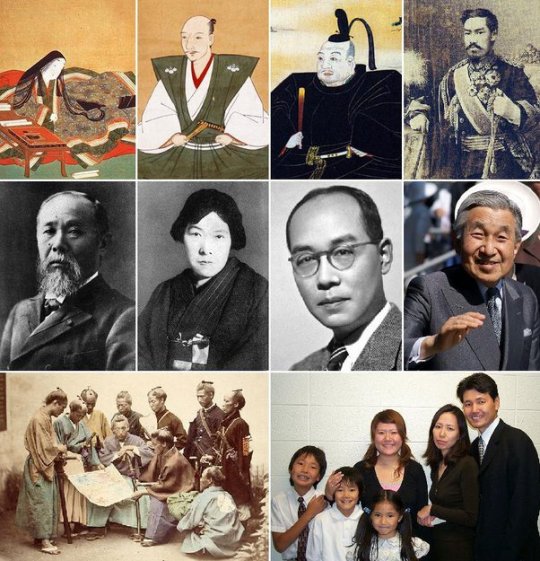

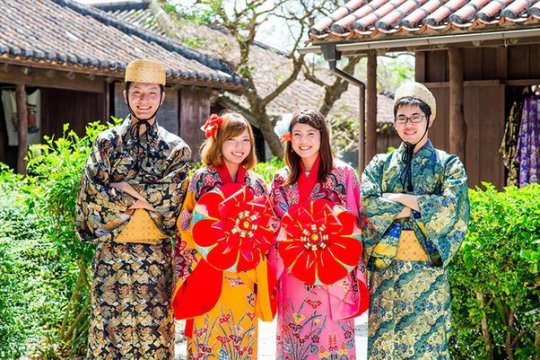
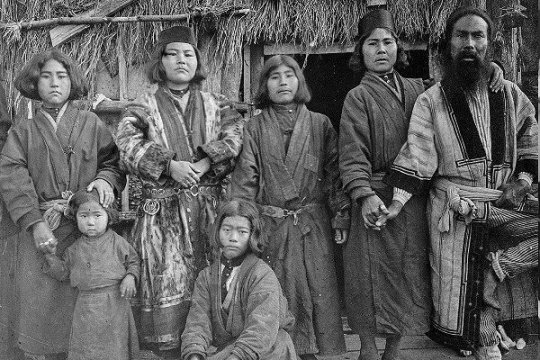

How many ethnicities are in Nipon(japan)?
Yamato Japanese 123,900,000
Ryukyuan Japanese1,300,000
Chinese 650,000
Korean 525,000
The Yamato people (大和民族, Yamato minzoku, literally "Yamato ethnicity") or the Wajin (和人, Wajin, 倭, literally "Wa people") is a term to describe the ethnic group that comprises over 98% of the population of Japan. Genetic and anthropometric studies has showed that the Yamato are an admixture of the migratory Kofun and Yayoi, who arrived from mainland East and Southeast Asia via the Korean Peninsula, as well as the indigenous Jōmon that were already living on the Japanese archipelago for thousands of years prior.
It can also refer to the first people that settled in Yamato Province (modern-day Nara Prefecture). Generations of Japanese historians, linguists, and archeologists have debated whether the word is related to the earlier Yamatai (邪馬臺). The Yamato clan set up Japan's first and only dynasty. The clan became the ruling faction in the area, and incorporated native Japanese, Chinese and Korean migrants. The clan leaders also elevated their own belief system that featured ancestor worship into a national religion known as Shinto.

The Ryukyuan people (Okinawan: 琉球民族 (るーちゅーみんずく), romanized: Ruuchuu minzuku or どぅーちゅーみんずく, Duuchuu minzuku, Japanese: 琉球民族/りゅうきゅうみんぞく, romanized: Ryūkyū minzoku, also Lewchewan or Loochooan)[8] are a Japonic-speaking East Asianethnic group native to the Ryukyu Islands, which stretch between the islands of Kyushu and Taiwan.[9] Administratively, they live in either the Okinawa Prefecture or the Kagoshima Prefecture within Japan. They speak one of the Ryukyuan languages, considered to be one of the two branches of the Japonic language family, the other being Japanese and its dialects. Hachijō is sometimes considered by linguists to constitute a third branch
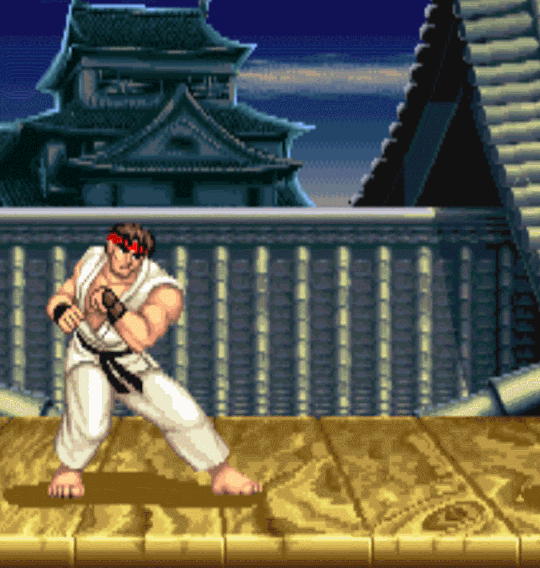
#ryukyuan#nippon#nipon#nihon#japan#kemetic dreams#yamato people#asian#east asian#east asians#ethnic diversity
11 notes
·
View notes
Text
Events 5.5 (before 1940)
553 – The Second Council of Constantinople begins. 1215 – Rebel barons renounce their allegiance to King John of England — part of a chain of events leading to the signing of the Magna Carta. 1260 – Kublai Khan becomes ruler of the Mongol Empire. 1494 – On his second voyage to the New World, Christopher Columbus sights Jamaica, landing at Discovery Bay and declares Jamaica the property of the Spanish crown. 1609 – Daimyō (Lord) Shimazu Tadatsune of the Satsuma Domain in southern Kyūshū, Japan, completes his successful invasion of the Ryūkyū Kingdom in Okinawa. 1640 – King Charles I of England dissolves the Short Parliament. 1654 – Cromwell's Act of Grace, aimed at reconciliation with the Scots, proclaimed in Edinburgh. 1762 – Russia and Prussia sign the Treaty of St. Petersburg. 1789 – In France, the Estates-General convenes for the first time since 1614. 1809 – Mary Kies becomes the first woman awarded a U.S. patent, for a technique of weaving straw with silk and thread. 1821 – Emperor Napoleon dies in exile on the island of Saint Helena in the South Atlantic Ocean. 1821 – The first edition of The Manchester Guardian, now The Guardian, is published. 1835 – The first railway in continental Europe opens between Brussels and Mechelen. 1862 – Cinco de Mayo: Troops led by Ignacio Zaragoza halt a French invasion in the Battle of Puebla in Mexico. 1864 – American Civil War: The Battle of the Wilderness begins in Spotsylvania County. 1865 – American Civil War: The Confederate government was declared dissolved at Washington, Georgia. 1866 – Memorial Day first celebrated in United States at Waterloo, New York. 1877 – American Indian Wars: Sitting Bull leads his band of Lakota into Canada to avoid harassment by the United States Army under Colonel Nelson Miles. 1886 – Workers marching for the Eight-hour day in Milwaukee, Wisconsin were shot at by Wisconsin National Guardsmen in what became known as the Bay View Massacre. 1887 – The Peruvian Academy of Language is founded. 1891 – The Music Hall in New York City (later known as Carnegie Hall) has its grand opening and first public performance, with Tchaikovsky as the guest conductor. 1904 – Pitching against the Philadelphia Athletics at the Huntington Avenue Grounds, Cy Young of the Boston Americans throws the first perfect game in the modern era of baseball. 1905 – The trial in the Stratton Brothers case begins in London, England; it marks the first time that fingerprint evidence is used to gain a conviction for murder. 1912 – The first issue of the Bolshevik newspaper Pravda was published. 1920 – Authorities arrest Nicola Sacco and Bartolomeo Vanzetti for alleged robbery and murder. 1930 – The 1930 Bago earthquake, the former of two major earthquakes in southern Burma kills as many as 7,000 in Yangon and Bago. 1936 – Italian troops occupy Addis Ababa, Ethiopia.
0 notes
Text
On this day in Wikipedia: Monday, 18th September
Welcome, Bienvenida, 안녕하세요, Willkommen 🤗 What does @Wikipedia say about 18th September through the years 🏛️📜🗓️?
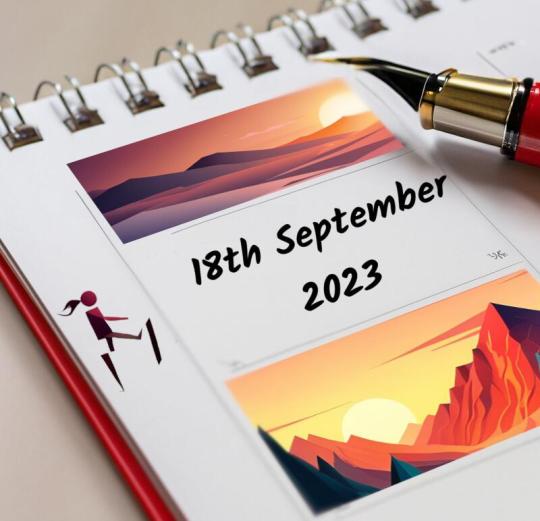
18th September 2021 🗓️ : Event - September 18 A ferry capsizes in Guizhou province, China due to bad weather, leaving ten people dead and five missing. "September 18 is the 261st day of the year (262nd in leap years) in the Gregorian calendar; 104 days remain until the end of the year. ..."
18th September 2017 🗓️ : Death - Afzal Ahsan Randhawa Afzal Ahsan Randhawa, Pakistani writer, poet, translator and playwright (b. 1937) "Muhammad Afzal Ahsan Randhawa (Punjabi and Urdu: محمد افضل احسن رندھاوا, 1 September 1937 – 18 September 2017) was a Pakistani Punjabi language writer, poet, translator, playwright and a politician. He authored several short stories and novels in the Punjabi language including Sooraj Grehan and..."
18th September 2013 🗓️ : Death - Veliyam Bharghavan Veliyam Bharghavan, Indian politician (b. 1928) "Veliyam Bharghavan (Malayalam: വെളിയം ഭാർഗവൻ; May 1928 – 18 September 2013) was a Communist leader from the Kerala, India. He was the state Secretary of Communist Party of India (CPI) from 1998 to 2010. In 2010 he retired from that position due to his health issues. He hails from Veliyam village of..."
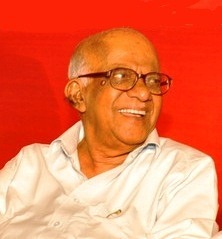
Image licensed under CC BY-SA 3.0? by
Kannan Shanmugam, Shanmugam studio, Kollam
Derivative Work: Kiran Gopi
18th September 1973 🗓️ : Event - The Bahamas The Bahamas, East Germany and West Germany are admitted to the United Nations. "The Bahamas ( bə-HAH-məz), officially the Commonwealth of The Bahamas, is an island country within the Lucayan Archipelago of the West Indies in the North Atlantic. It takes up 97% of the Lucayan Archipelago's land area and is home to 88% of the archipelago's population. The archipelagic state..."
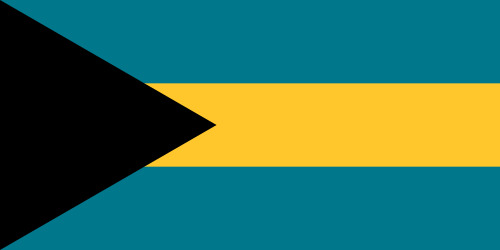
Image by Government of Bahamas
18th September 1923 🗓️ : Birth - Al Quie Al Quie, American politician, 35th Governor of Minnesota (d. 2023) "Albert Harold Quie ( KWEE; September 18, 1923 – August 18, 2023) was an American politician and farmer. Quie served as a member of the United States House of Representatives from 1958 to 1979 and as Governor of Minnesota from 1979 to 1983. Regarded as a moderate Republican, Quie was considered by..."

Image by US Government Printing Office
18th September 1819 🗓️ : Birth - Léon Foucault Léon Foucault, French physicist and academic (d. 1868) "Jean Bernard Léon Foucault (UK: , US: ; French: [ʒɑ̃ bɛʁnaʁ leɔ̃ fuko]; 18 September 1819 – 11 February 1868) was a French physicist best known for his demonstration of the Foucault pendulum, a device demonstrating the effect of Earth's rotation. He also made an early measurement of the speed of..."

Image licensed under CC BY 3.0? by Zátonyi Sándor, (ifj.) Fizped
18th September 🗓️ : Holiday - Island Language Day (Okinawa Prefecture, Japan) "The Ryukyuan languages (琉球語派, Ryūkyū-goha, also 琉球諸語, Ryūkyū-shogo or 島言葉 in Ryukyuan, Shima kutuba, literally "Island Speech"), also Lewchewan or Luchuan (), are the indigenous languages of the Ryukyu Islands, the southernmost part of the Japanese archipelago. Along with the Japanese language and..."

Image by Garam
0 notes
Photo
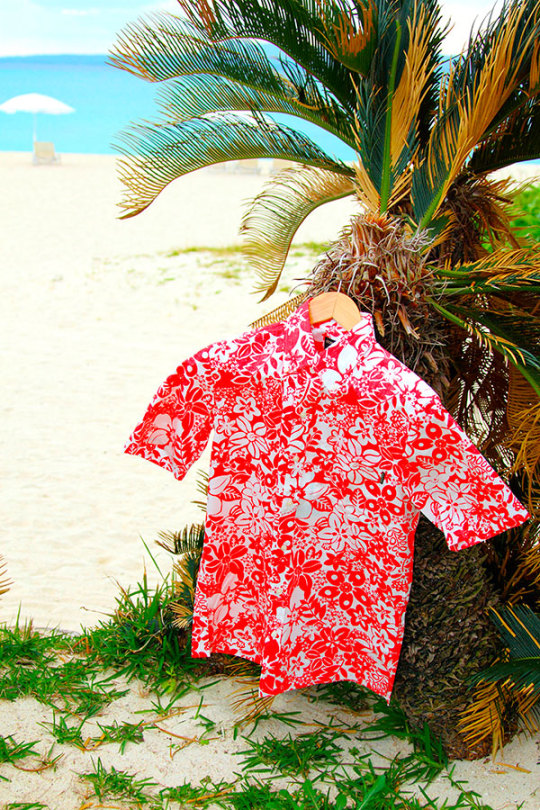
Fashion time: Kariyushi wear aka an Okinawan style shirt. USA peeps think Hawaiian shirt. Lightweight, cooling, kind of an island uniform. “Kariyushi is a word made up of “kari” and “yushi” in Okinawan (Ryukyu) Dialect and means auspicious or happiness. Kari means lucky and yushi means come near. Kariyushi wear was named in a wish that wearing it will bring you fortune.” - OkinawanHai
This is what Chozen almost always wears. No matter the age.

These button up shirts are supposed to be super versatile, dressed in them you’re ready for an occasion, hanging out at the beach, work, going dancing or a fancy event in the brutal summer months.
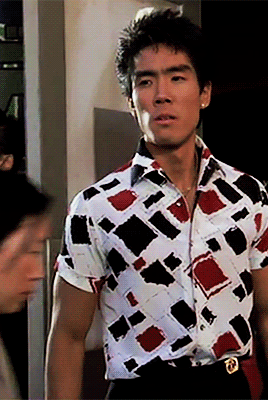
And Chozen’s not the only one who wears them. While Mr. Miyagi also lived in Hawaii for a short period of time (or a wonky confusing period of time because the time frame of the entire series is wacky.) and this could be a Hawaiian shirt I like to think that it’s either Kariyushi wear or at least something reminiscent of home.

Kariyushi wear is done in a few different styles. Colorful island prints like Mr. Miyagi’s and the first few earlier (not Mr. Miyagi’s go to really) or bingata
“Bingata (Okinawan: 紅型, literally “red style”) is an Okinawan traditional resist dyed cloth, made using stencils and other methods. It is generally brightly coloured and features various patterns, usually depicting natural subjects such as fish, water, and flowers. Bingata is worn during traditional Ryūkyū arts performances and historical reenactments.” - My Okinawan Story
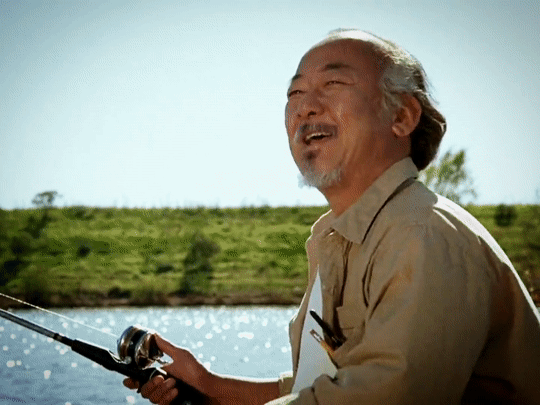
While this might be a stretch and I don’t know if the costuming department was trying to go for it, there is also an Okinawan fabric called “Bashofu” or banana fiber. It tends to be this light weight tan color like the clothing Mr. Miyagi tends to almost always be wearing. I like to think that it is in fact Bashofu and sometimes this is made into Kariyushi wear which can have long sleeves or quarter sleeves. “Kijoka no Bashofu are a woven cloth produced in Kijoka, Ogimi Village in northern Okinawa. Bashofu is made from the fibers of the Japanese banana plant called Basho, and has been used to make kimonos in Okinawa since ancient times. Kijoka no Bashofu is characterized by its smoothness, lightness and air permeance. The firm and thin cloth, also described as “wings of a dragonfly,” are less likely to stick to the skin even in a humid climate and have been highly valued by people in Okinawa.” - Kogei Japan
#fashion#listen all of this might've been an accident or a coincident from the fashion department for the movies#but I also like to hope that it was on purpose#and also the feelings I have about Chozen growing up to become more Mr. Miyagi like while retaining some of his own style#gives me so many emotions
24 notes
·
View notes
Text

US Marine de la 4th Marine Division (Fighting Fourth) abattu par un sniper le 1er jour de l'assaut amphibie d'Iwo Jima – Bataille d'Iwo Jima – Campagne des archipels Ogasawara et Ryūkyū – Guerre du Pacifique – Iwo Jima – Japon – 19 février 1945
#WWII#guerre du pacifique#pacific war#volcano and ryukyu islands campaign#campagne des archipels ogasawara et ryūkyū#bataille d'iwo jima#battle of iwo jima#united states marine corps#us marine corps#usmc#4e division des marines#4th marine division#fighting fourth#iwo jima#japon#japan#19/02/1945#02/1945#1945
13 notes
·
View notes
Text
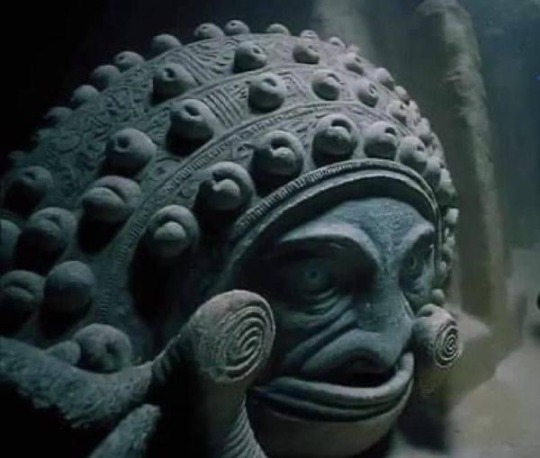
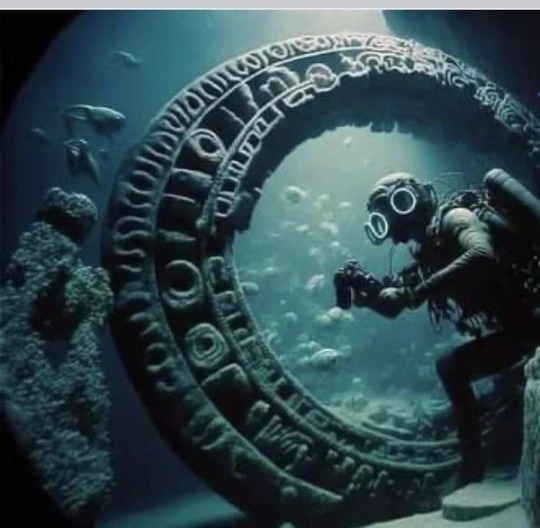

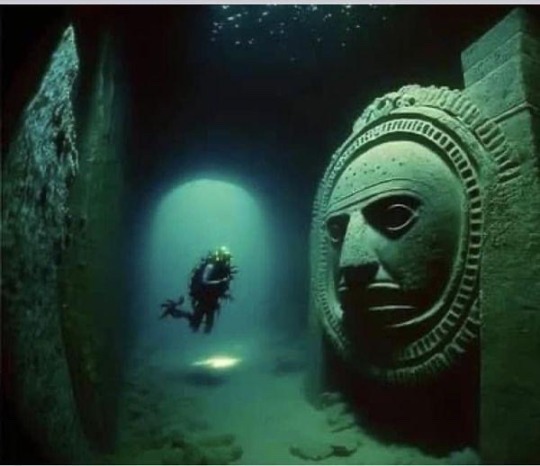
Yonaguni structures
They are a set of structures discovered on the Japanese island of Yonaguni around 1985 by the Japanese diver Kihachirō Aratake, who found them by chance. It is a megalith, which was probably out of the sea during the ice ages, with shapes on its surface that seem to have been carved by humans.
There has been much speculation about the origin of this monument as it is called in Japan. For various geologists and historians, the structures could have a natural origin, while others argue that these structures show artificial and human work, at least in part.
On the pseudo-archaeological side, other authors suppose that Yonaguni was part of the Mu civilization, whose fate would have been similar to that of Atlantis or Thule.
Some time after its discovery, a group of scientists led by Misaki Kimura, from Ryūkyū University, confirmed its existence. According to Professor Kimura's study, the natural structure was at some time modified by humans. This would give strength to the speculations according to which Yonaguni could have been part of the civilization of Mu and that it later disappeared, just like Atlantis or Thule. It would be a construction carried out at least 10 millennia ago, which would make it, together with the Göbekli Tepe sanctuary, the oldest known architectural structure, long before the first buildings in Mesopotamia, Egypt, India and China.
21 notes
·
View notes
Photo




Okinawa’s iconic shīsā resemble exotic lions and have been part of the unique culture of the Ryūkyū Islands for centuries. Their use on rooftops is a relatively recent development, though, dating from the late 1800s. Perched atop the house, the fierce-faced creatures watch over the structure and its inhabitants.
110 notes
·
View notes
Photo
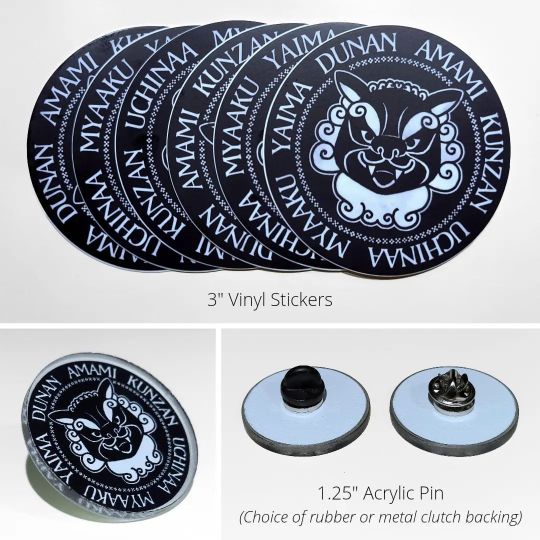
Haisai, gusuuyoo. I hope everyone is safe and doing well. I teamed up with Nami Oshiro, a fantastic Shimanchu American artist based in Virginia, to create the first three items in an ongoing effort to raise funds for independent Shimakutuba practitioners and projects.
Many Shimanchu creators and educators are doing the work on their own time and out of their own pockets, so I'm hoping that this (and future fundraisers) can be a small show of support and gratitude.
This 3" sticker, 2.25" button, and 1.25" acrylic pin set features a Ramones logo-inspired design with an open-mouth shiisaa symbolizing the sharing of good things, i.e. our indigenous languages. There are several distinct languages throughout the Ryūkyū Islands (all of which are endangered), so we decided to go with the six regions recognized by UNESCO: Amami, Kunjan (Kunigami), Uchinaa (Okinawa), Myaaku (Miyako), Yaima (Yaeyama), Dunan (Yonaguni).
Please visit the Ko‑fi shop today! All proceeds (minus item production costs and shipping fees) will be donated to individuals/groups and I'll post receipts once the donations are made.
P.S. I'm still selling items through the Shimanchu Dushi-nu-chaa Online Sale, if you're interested in combining shipping.
Shiisaa illustration by Nami Oshiro
- namioshiro.com - inprnt.com/profile/namioshiro - etsy.com/shop/iyasasa - instagram.com/nami_oshiro - twitter.com/namioshiro
#okinawa#okinawan#uchinaanchu#uchinanchu#shimanchu#ruuchuu#loochoo#ryukyu#ryukyuan#shiisaa#shisa#shimakutuba#uchinaaguchi#uchinaguchi#沖縄#ウチナーンチュ#琉球#島人#世界のウチナーンチュ#世界ウチナーンチュ#nami oshiro#art#artwork
29 notes
·
View notes